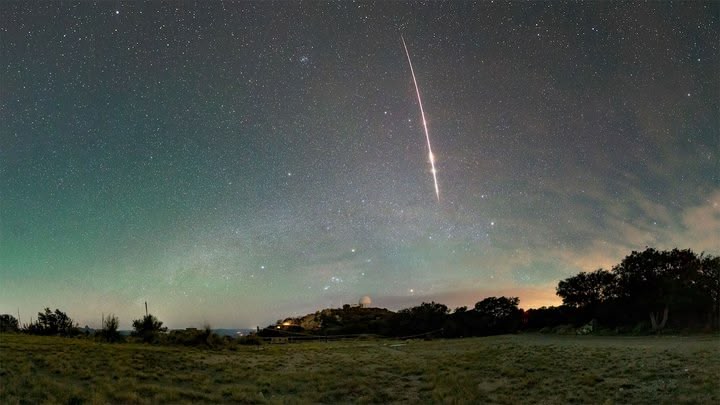Did you know: about the expected fireballs meteor shower 2025?
The Southern Taurids meteor shower, known for its fireballs, peaks on the night of November 4th, 2025. The Northern Taurids, another branch of the same shower, peaks on November 8-9, 2025. Both showers are active from late October through November and can produce an increased number of fireball sightings. Additionally, the Perseids, which peak in mid-August, are known for fireballs and can be seen from July 17 to August 23, with the peak on August 12-13.
Here's a more detailed look:
Southern Taurids:
Peak: November 4, 2025.
Activity: September through November.
Fireballs: Known for producing fireballs.
Moonlight: 96% full moon on the peak night, which will impact visibility, according to the American Meteor Society.
Radiant: 03:34 +14.5°.
Northern Taurids
Peak: November 8-9, 2025.
Activity: Late October through November, often overlapping with the Southern Taurids.
Fireballs: Also known for producing fireballs.
Moonlight: 83% full moon on the peak night, which will impact visibility, according to the American Meteor Society.
Radiant: 03:53 +22.2°.
Perseids:
Peak: August 12-13, 2025.
Activity: July 17 to August 23.
Fireballs: Known for bright meteors and long trails.
Moonlight: The 84% full moon during the peak will diminish the number of visible meteors.
Tips for Viewing:
Find a dark location: Away from city lights for the best viewing experience.
Allow your eyes to adjust: It takes about 30 minutes for your eyes to adjust to the darkness.
Look towards the radiant: The radiant is the point in the sky where the meteors appear to originate, according to EarthSky.
Be patient: Meteor showers can be unpredictable, so be prepared to watch for a while.
Don't use a telescope or binoculars: Wide-field viewing is best.
Here's a more detailed look:
Southern Taurids:
Peak: November 4, 2025.
Activity: September through November.
Fireballs: Known for producing fireballs.
Moonlight: 96% full moon on the peak night, which will impact visibility, according to the American Meteor Society.
Radiant: 03:34 +14.5°.
Northern Taurids
Peak: November 8-9, 2025.
Activity: Late October through November, often overlapping with the Southern Taurids.
Fireballs: Also known for producing fireballs.
Moonlight: 83% full moon on the peak night, which will impact visibility, according to the American Meteor Society.
Radiant: 03:53 +22.2°.
Perseids:
Peak: August 12-13, 2025.
Activity: July 17 to August 23.
Fireballs: Known for bright meteors and long trails.
Moonlight: The 84% full moon during the peak will diminish the number of visible meteors.
Tips for Viewing:
Find a dark location: Away from city lights for the best viewing experience.
Allow your eyes to adjust: It takes about 30 minutes for your eyes to adjust to the darkness.
Look towards the radiant: The radiant is the point in the sky where the meteors appear to originate, according to EarthSky.
Be patient: Meteor showers can be unpredictable, so be prepared to watch for a while.
Don't use a telescope or binoculars: Wide-field viewing is best.





